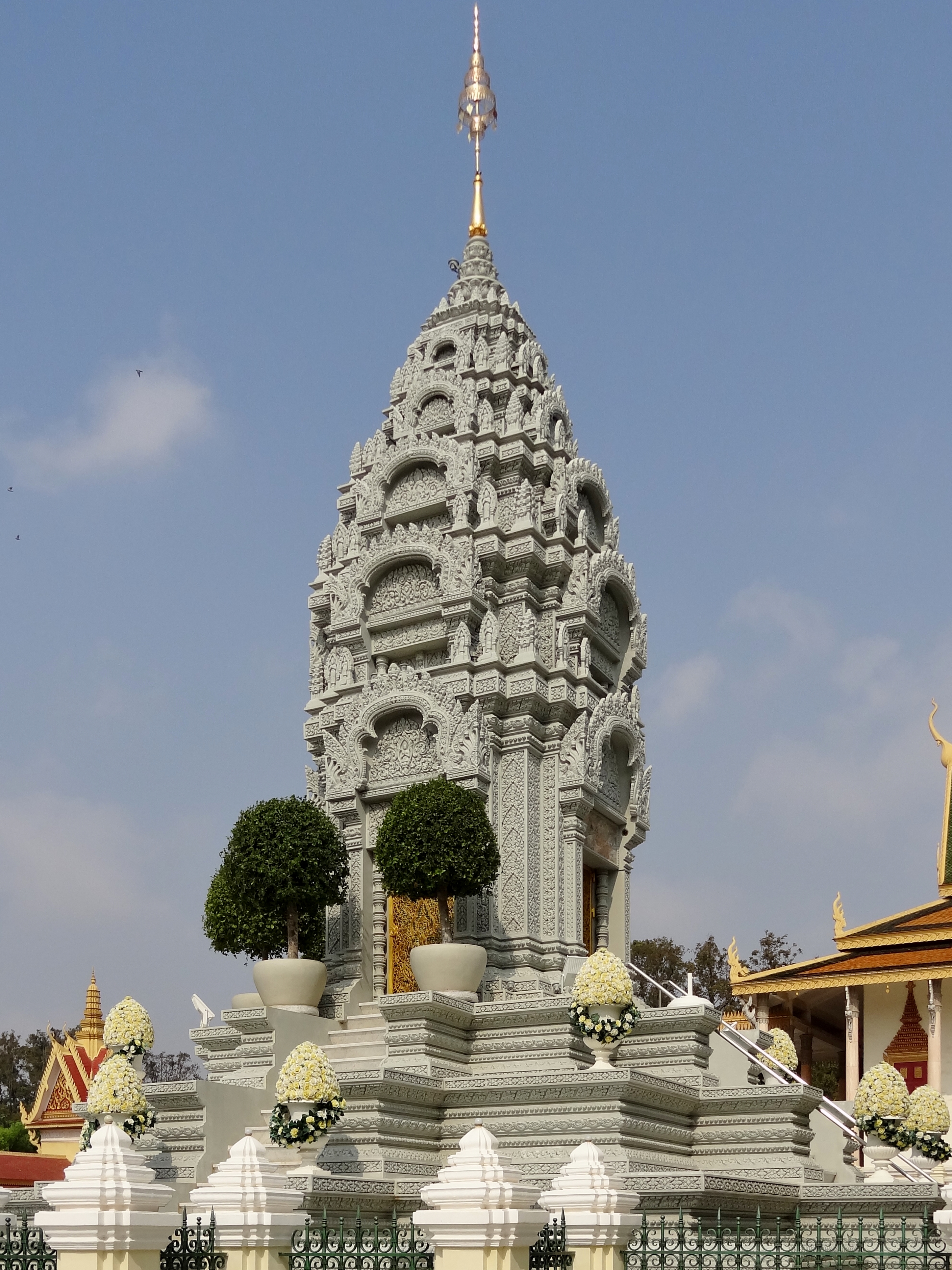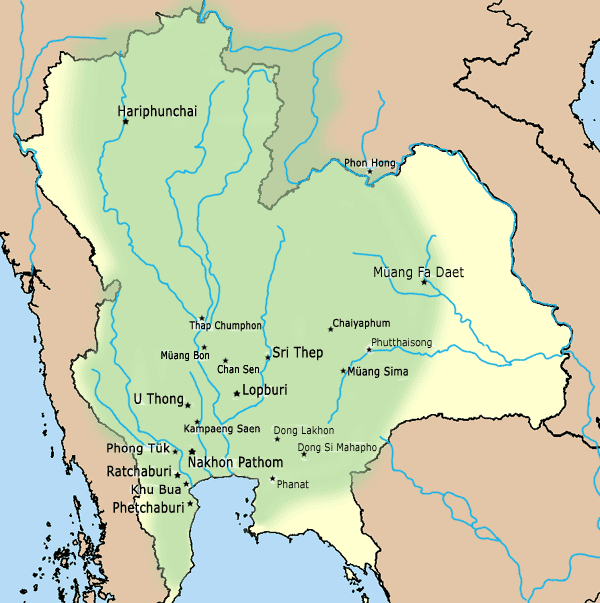|
Phraek Si Racha
Phraek Si Racha (, ) is a ''tambon'' (sub-district) in Sankhaburi district, Chai Nat province, central Thailand. It is considered the downtown Sankhaburi where the district office is located. History Phraek Si Racha is a historic place, its history dates back to around 2,500 years ago, before the establishment of Ayutthaya Kingdom. Its name is inscribed in the Ram Khamhaeng Inscription as the vassal state of Sukhothai Kingdom. The terrain is a lowland along the Noi River, Noi river, a tributary of the Chao Phraya river. This made Phraek Si Racha a water transportation community that could navigate along the Noi river to meet the Chao Phraya in the present-day Chai Nat province, or could travel along other local waterways to the Tha Chin river, where Suphannabhum State (now Suphanburi province) was located. In short, Phraek Si Racha was a passageway for water travel to larger city-states such as Suphannabhum or Ayutthaya, and could exit to the Gulf of Siam via both waterways. The wo ... [...More Info...] [...Related Items...] OR: [Wikipedia] [Google] [Baidu] |
Confluence
In geography, a confluence (also ''conflux'') occurs where two or more watercourses join to form a single channel (geography), channel. A confluence can occur in several configurations: at the point where a tributary joins a larger river (main stem); or where two streams meet to become the river source, source of a river of a new name (such as the confluence of the Monongahela River, Monongahela and Allegheny River, Allegheny rivers, forming the Ohio River); or where two separated channels of a river (forming a river island) rejoin downstream from their point of separation. Scientific study Confluences are studied in a variety of sciences. Hydrology studies the characteristic flow patterns of confluences and how they give rise to patterns of erosion, bars, and scour pools. The water flows and their consequences are often studied with mathematical models. Confluences are relevant to the distribution of living organisms (i.e., ecology) as well; "the general pattern [downstream o ... [...More Info...] [...Related Items...] OR: [Wikipedia] [Google] [Baidu] |
Muban
Muban (; , ) is the lowest Administrative divisions of Thailand, administrative sub-division of Thailand. Usually translated as 'village' and sometimes as 'hamlet (place), hamlet', they are a subdivision of a tambon (subdistrict). , there were 74,944 administrative mubans in Thailand. As of the 1990 census, the average village consisted of 144 households or 746 persons. The average land area of villages in Thailand is very small, its average area is about , and its average population is also very small, at only 932 people. Nomenclature ''Muban'' may function as one word, in the sense of a hamlet or village, and as such, it may be shortened to ''ban''. ''Mu ban'' may also function as two words, i.e., wikt:หมู่, หมู่ 'group' (of) wikt:บ้าน, บ้าน 'homes'. * ''Mu'', in the sense of group (of homes in a tambon), are assigned numbers in the sequence in which each is entered in a register maintained in the district or branch-district office. * ''Ban'', i ... [...More Info...] [...Related Items...] OR: [Wikipedia] [Google] [Baidu] |
ASTV Manager
''Manager Daily'' (; ) is a Thai-language daily newspaper published in Bangkok and distributed nationwide. It is the second best-selling newspaper in Thailand. ''Manager Daily 360 Degree'' has a circulation in excess of 850,000 copies. History ''Manager Daily'' was founded by media mogul Sondhi Limthongkul, who also launched the satellite broadcasting channel ASTV. It is part of the Manager Group, which also includes the ''Asia Times'' newspaper, based in Hong Kong. See also * Media of Thailand Thailand has a well-developed mass media sector, especially by Southeast Asian standards. The Thai Politics of Thailand, government and the military have long exercised considerable control, especially over radio and TV stations. During the gover ... References External links * Newspapers published in Thailand Thai-language newspapers Mass media in Bangkok Manager Media Group {{Thailand-stub ... [...More Info...] [...Related Items...] OR: [Wikipedia] [Google] [Baidu] |
Sharpshooter
A sharpshooter is one who is highly proficient at firing firearms or other projectile weapons accurately. Military units composed of sharpshooters were important factors in 19th-century combat. Along with " marksman" and "expert", "sharpshooter" is one of the three marksmanship badges awarded by the United States Army and the United States Marine Corps. The United States Navy and the United States Coast Guard use a ribbon with an attached "S" device to note a sharpshooter qualification. Military sharpshooter history American Revolutionary War and War of 1812 Some of the earliest mentions of rifling and sharpshooting units in the United States originate during around the American Revolutionary War and the War of 1812. During the 1777 battles of Saratoga, Continental Army officer Benedict Arnold strategically arranged for sharpshooter units to target enemy officers and artillery units. All such sharpshooters units were disbanded following the war's end in 1783, but they wer ... [...More Info...] [...Related Items...] OR: [Wikipedia] [Google] [Baidu] |
Bang Rachan
The village of Bang Rachan (, ) was in the north of Ayutthaya, the old capital of Siam, the predecessor state of modern Thailand. Today their village is located in Khai Bang Rachan District of Sing Buri Province. The village is remembered in Thai popular history for its resistance against the Burmese invaders in the Burmese–Siamese War (1765–1767) that ended the Ayutthaya Kingdom. According to Thai tradition, the Burmese northern invasion army led by General Ne Myo Thihapate was held up for five months at Bang Rachan.Wyatt, p. 117 The popular narrative cannot all be true as the entire northern campaign took just over five months (mid-August 1765 to late-January 1766), and the northern Burmese army was still stuck in Phitsanulok, in north-central Siam, as late as December 1765. Burmese sources mention "petty chiefs" (cf. "mueang") stalling the northern Burmese army's advance, but it was early in the campaign along the Wang River in northern Siam (not near Ayutthaya) during th ... [...More Info...] [...Related Items...] OR: [Wikipedia] [Google] [Baidu] |
Wat Mahathat, Chai Nat
A wat (, ; , ; , ; ; , ) is a type of Buddhist and Hindu temple in Cambodia, Laos, East Shan State (Myanmar), Yunnan (China), the Southern Province of Sri Lanka, and Thailand. Etymology The word ''wat'' is borrowed from the Sanskrit ''vāṭa'' (Devanāgarī: वाट), meaning "enclosure". The term has varying meanings in each region, sometimes referring to a specific type of government-recognised or large temple, other times referring to any Buddhist or Hindu temple. Overview In Buddhism, a ''wat'' is a Buddhist sacred precinct with vihara, a temple, an edifice housing a large image of Buddha and a facility for lessons. A site without a minimum of three resident ''bhikkhu''s cannot correctly be described as a wat although the term is frequently used more loosely, even for ruins of ancient temples. As a transitive or intransitive verb, ''wat'' means to measure, to take measurements; compare ''templum'', from which ''temple'' derives, having the same root as ''templa ... [...More Info...] [...Related Items...] OR: [Wikipedia] [Google] [Baidu] |
Dong Khon
Dong or DONG may refer to: Places * Dong Lake, or East Lake, a lake in China * Dong, Arunachal Pradesh, a village in India * Dong (administrative division) (동 or 洞), a neighborhood division in Korea Person names Surnames *Dǒng (surname) or 董, a Chinese surname *Dōng (surname) or 東, a Chinese surname Persons *Queen Dong (1623–1681), princess consort of Koxinga and mother of Zheng Jing *Empress Dong (Ran Min's wife), wife of Ran Min, emperor of Chinese state Ran Wei *Empress Dowager Dong (died 189), empress dowager during Han dynasty Entertainment * ''Dong'' (film) (东), a documentary film by Jia Zhangke. * Dong Open Air, a heavy metal festival in Germany. * D!NG (previously Do Online Now Guys, or DONG), a YouTube channel created and hosted by Michael Stevens as a segment of the Vsauce, Vsauce2, Vsauce3 and WeSauce channels *General Dong, villain of the 1992 Indian film ''Tahalka'', played by Amrish Puri Other uses * Dong people, an ethnic minority group o ... [...More Info...] [...Related Items...] OR: [Wikipedia] [Google] [Baidu] |
Nakhon Sawan Province
Nakhon Sawan (, , ) is one of Thailand's seventy-six provinces (''changwat''). It lies in lower northern Thailand, neighbouring the provinces of Kamphaeng Phet, Phichit, Phetchabun, Lopburi, Sing Buri, Chai Nat, Uthai Thani, and Tak (clockwise from north). Toponymy The word ''nakhon'' originates from the Sanskrit word ''nagara'' meaning 'city', and the word ''sawan'' from Sanskrit '' svarga'' meaning 'heaven'. Hence the name of the province literally means 'city of heaven' or 'heavenly city'. History Nakhon Sawan province was a city since Dvaravati era. While part of the Sukhothai Kingdom, it was called '' Mueang'' Phra Bang, the southern frontier city of Sukhothai. Later within the Ayutthaya kingdom it was an important trade center because of its location at the two major rivers from the north. It also was the common meeting point of Burmese troops before moving to attack Ayutthaya. In the reign of King Taksin the Great, Phra Bang became a Siamese military base to ... [...More Info...] [...Related Items...] OR: [Wikipedia] [Google] [Baidu] |
Lavo Kingdom
The Lavo Kingdom () was a political entity (Mandala (Southeast Asian political model), mandala) on the left bank of the Chao Phraya River in the Upper Chao Phraya valley from the end of Dvaravati civilization, in the 7th century, until 1388. The original center of Lavo was Lopburi, Lavapura and was shifted to Ayodhya (Xiān) in the 1080s. However, since both Ayodhya or Xiān and Lavo separately sent embassies to the Chinese court in the late 1200s, these two polities were potentially individual states. Before the 9th century, Lavo, together with other supra-regional settlements, such as Si Thep Historical Park, Si Thep, , Phimai Historical Park, Phimai, Nakhon Pathom, and others were the centers of the Mandala (political model), mandala-style polities of Dvaravati. Due to several circumstances, including climate changes and the invasions of the surrounding polities, several Dvaravati centers lost their prosperity, and the mandalas in the Chao Phraya River, Menam Valley was then s ... [...More Info...] [...Related Items...] OR: [Wikipedia] [Google] [Baidu] |



